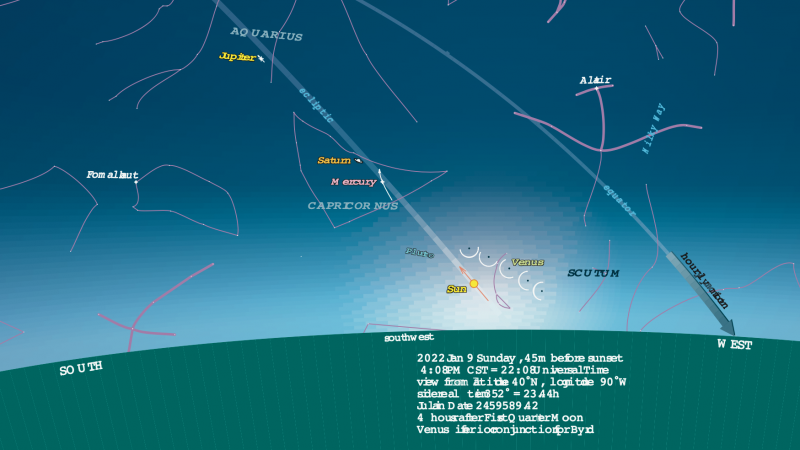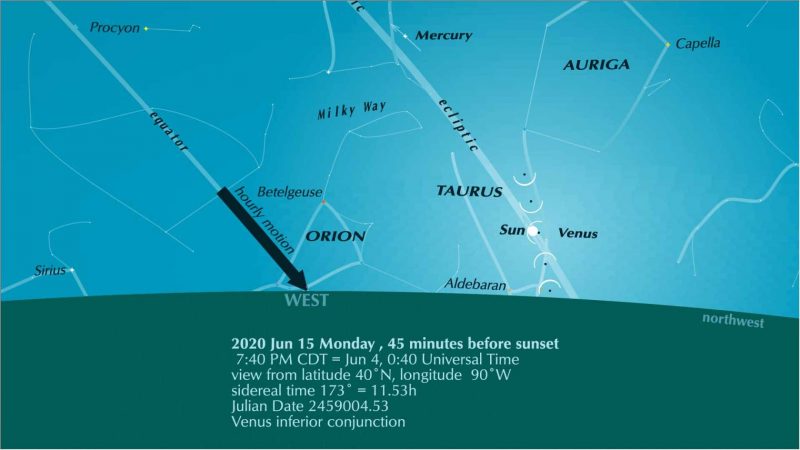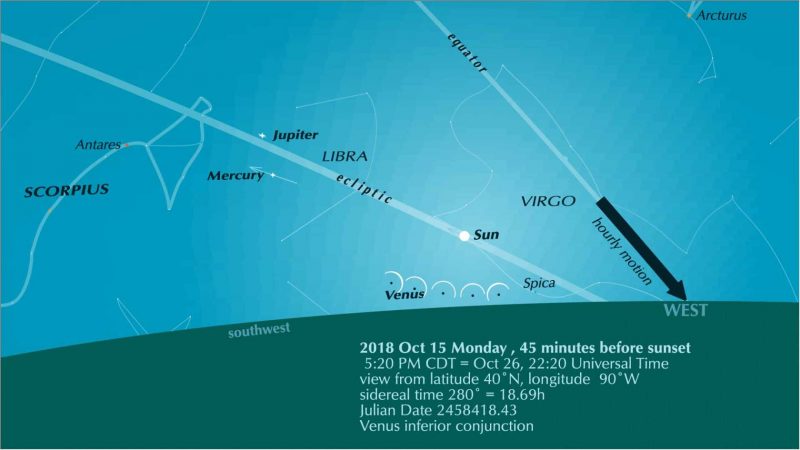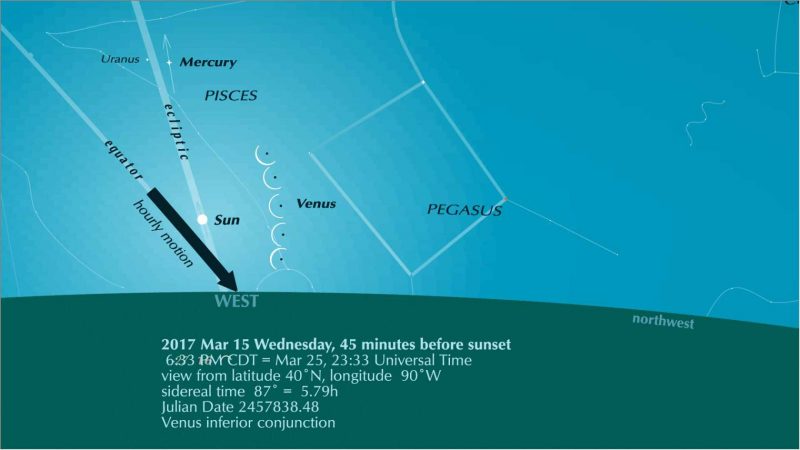
Guy Ottewell originally published this article at his website, Universal Workshop. Re-printed with permission.
Brightest planet Venus to rush between us and the sun on January 8-9
The phenomenon is called the planet’s inferior conjunction. It happens each 19.5 months, or five times in each of the famous Venus 8-year cycles. And each of these five recurring occasions has its own sharply different character – different ways of appearing on our sky’s dome – because of happening at a different position in the orbits of Venus and Earth around the sun. On this page, you’ll find four pictures of Venus on the day of an inferior conjunction, just before sunset. One is for the January 8-9, 2022, passage of Venus between us and the sun (see above). The others are for the last several passages of Venus between us and the sun: June 3, 2020; October 26, 2018; and March 25, 2017. Isn’t it interesting? The heavens are so orderly!
The 2022 lunar calendars are here. Order yours before they’re gone!
Compare to past Venus passages
Use the images on this page to note that …
In 2022-like years, Venus crosses about 5 degrees north of the sun. This year’s passage might be considered middling-north. For those who make a game of spotting Venus near to conjunction, it’s less favorable than the more-than-8-degree-north passages of 2017 and 2025.
In 2020-like years, Venus comes close to passing exactly in front of the sun, as it last did – a transit of Venus – in 2012.
In 2018-like years, Venus sneaks by 6 degrees south of the sun, so that the best opportunities for viewing are for Southern Hemisphere observers.
In 2017-like years, Venus hurtles 8 degrees north of the sun. It’s at these times that that careful observers (masking out the sun) get a chance to spot Venus around sunset near to, or even on, the day of conjunction.
Also note that – in all of these illustrations – the slender sun-illuminated crescent of Venus is exaggerated 150 times in size. The dot at the center of the crescent is the planet’s actual position (and nearer to its real size). The sun is exaggerated only twice in size. You won’t see the details other than the sun and – hopefully – Venus, but they tell you the way you’re looking into the solar system and the universe.



Bottom line: Four illustrations from Guy Ottewell – 2017, 2018, 2020 and 2022 – show the different character of Venus’ passages between us and the sun at inferior conjunction.
Read more: Inferior conjunction – Venus between sun and Earth – January 8-9, 2022
The post Venus passages compared: 2017 to 2022 first appeared on EarthSky.
0 Commentaires